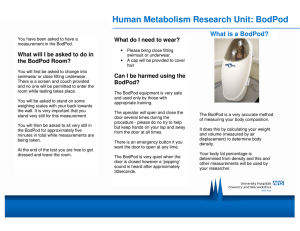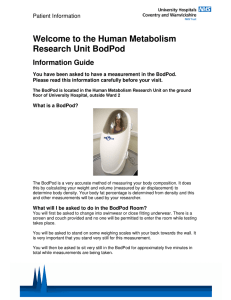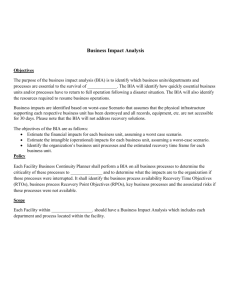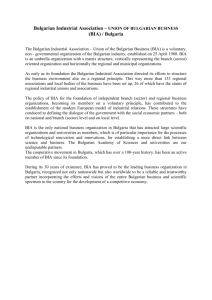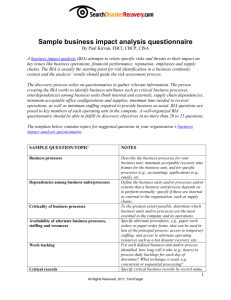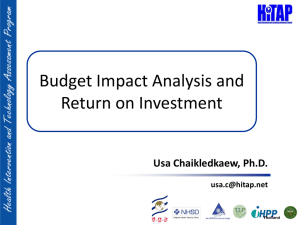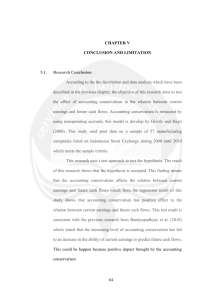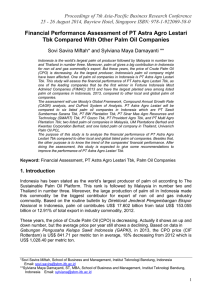Body Composition Laboratory
advertisement
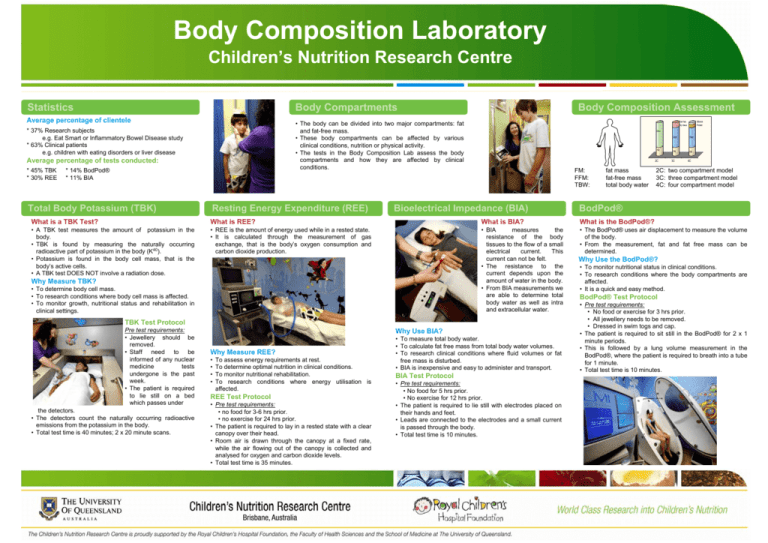
Body Composition Laboratory Children’s Nutrition Research Centre Statistics Body Compartments Average percentage of clientele Average percentage of tests conducted: * 14% BodPod® * 11% BIA Total Body Potassium (TBK) Fat-free dry mass • The body can be divided into two major compartments: fat and fat-free mass. • These body compartments can be affected by various clinical conditions, nutrition or physical activity. • The tests in the Body Composition Lab assess the body compartments and how they are affected by clinical conditions. * 37% Research subjects e.g. Eat Smart or Inflammatory Bowel Disease study * 63% Clinical patients e.g. children with eating disorders or liver disease * 45% TBK * 30% REE Body Composition Assessment Resting Energy Expenditure (REE) Mineral Protein FFM TBW FM 2C FM: FFM: TBW: Bioelectrical Impedance (BIA) fat mass fat-free mass total body water FM 3C TBW FM 4C 2C: two compartment model 3C: three compartment model 4C: four compartment model BodPod® What is a TBK Test? What is REE? What is BIA? What is the BodPod®? • A TBK test measures the amount of potassium in the body. • TBK is found by measuring the naturally occurring radioactive part of potassium in the body (K40). • Potassium is found in the body cell mass, that is the body’s active cells. • A TBK test DOES NOT involve a radiation dose. • REE is the amount of energy used while in a rested state. • It is calculated through the measurement of gas exchange, that is the body’s oxygen consumption and carbon dioxide production. • BIA measures the resistance of the body tissues to the flow of a small electrical current. This current can not be felt. • The resistance to the current depends upon the amount of water in the body. • From BIA measurements we are able to determine total body water as well as intra and extracellular water. • The BodPod® uses air displacement to measure the volume of the body. • From the measurement, fat and fat free mass can be determined. Why Measure TBK? • To determine body cell mass. • To research conditions where body cell mass is affected. • To monitor growth, nutritional status and rehabilitation in clinical settings. TBK Test Protocol Pre test requirements: • Jewellery should be removed. • Staff need to be informed of any nuclear medicine tests undergone is the past week. • The patient is required to lie still on a bed which passes under the detectors. • The detectors count the naturally occurring radioactive emissions from the potassium in the body. • Total test time is 40 minutes; 2 x 20 minute scans. Why Use BIA? Why Measure REE? • • • • To assess energy requirements at rest. To determine optimal nutrition in clinical conditions. To monitor nutritional rehabilitation. To research conditions where energy utilisation is affected. REE Test Protocol • Pre test requirements: • no food for 3-6 hrs prior. • no exercise for 24 hrs prior. • The patient is required to lay in a rested state with a clear canopy over their head. • Room air is drawn through the canopy at a fixed rate, while the air flowing out of the canopy is collected and analysed for oxygen and carbon dioxide levels. • Total test time is 35 minutes. • To measure total body water. • To calculate fat free mass from total body water volumes. • To research clinical conditions where fluid volumes or fat free mass is disturbed. • BIA is inexpensive and easy to administer and transport. BIA Test Protocol • Pre test requirements: • No food for 5 hrs prior. • No exercise for 12 hrs prior. • The patient is required to lie still with electrodes placed on their hands and feet. • Leads are connected to the electrodes and a small current is passed through the body. • Total test time is 10 minutes. Why Use the BodPod®? • To monitor nutritional status in clinical conditions. • To research conditions where the body compartments are affected. • It is a quick and easy method. BodPod® Test Protocol • Pre test requirements: • No food or exercise for 3 hrs prior. • All jewellery needs to be removed. • Dressed in swim togs and cap. • The patient is required to sit still in the BodPod® for 2 x 1 minute periods. • This is followed by a lung volume measurement in the BodPod®, where the patient is required to breath into a tube for 1 minute. • Total test time is 10 minutes.
